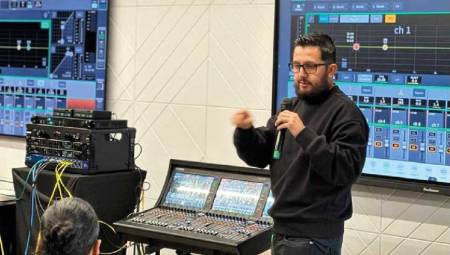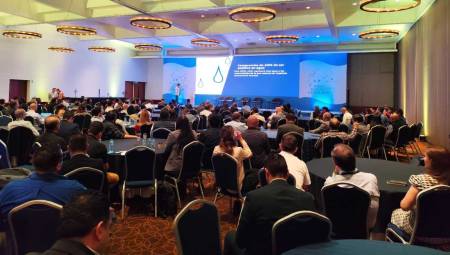Latin America. QSC continues to increase its presence in the Latin market. In recent weeks, Didiê Cunha joined the team serving the region, concentrating on southern Latin America, with Brazil as one of the main growth hotspots in the region.
In conversation with AVI Latin America, he stressed that QSC's intention is "to have a local and dedicated presence to support, serve the channels and expand the presence of the brand in the region. The part of training and certifications is also very important and there is a great demand from the market that seeks to train to design and execute projects at an even better level. We are working to implement a regular certification schedule in the region."
Today, the team serving Latin America at QSC is led by Sales Director Hernán Rame, who focuses on Northern Latin America and the region's strategic growth. They are also supported by the team of expert application engineers based in Mexico, José Carselle and Luis Peña.
But the growth in the region is not only in its team of professionals, but also in projects that use QSC technology. One of the most recent is the Santiago airport in Chile, where QSC actively participates in the design and programming of the system for all airport terminals.
"The factory offers in this project, and for anyone else who needs it, professional services, service where the factory is contracted and our application engineers actively participate in the whole process, which guarantees the quality and delivery that the customer expects from a system of this size," commented Didiê Cunha.
Finally, on the microcomponent crisis affecting the technology industry, he explained that "QSC has always been very transparent and honest with the market. In some cases, this meant pausing production of some lines so that others would not be affected. One of the advantages of QSC is that the Q-LAN protocol is owned by QSC and uses different components than other IP protocols on the market, so its production was not so affected."
He added that the factory also reacted quickly by launching other networked devices, such as the Core Nano, for example, which was always available for immediate delivery to accurately serve projects where the solution is based entirely on an AV over IP concept.
















